This is the free version of The Morning Dispatch. To unlock the full version and start your day informed on the biggest stories impacting your world, become a Dispatch member.
Happy Tuesday! There’s film, there’s real life, and then there’s Australia. Last week, a flight from Melbourne to Brisbane was delayed for two hours after a snake was discovered in the passenger jet’s cargo hold. Fortunately, the stowaway serpent was a member of Australia’s nonvenomous minority.
Quick Hits: Today’s Top Stories
- Israeli Prime Minister Benjamin Netanyahu met with President Donald Trump at the White House on Monday evening, marking the leaders’ third face-to-face meeting since the start of Trump’s second term in January. During the visit, Netanyahu announced that he had sent a letter to the Norwegian Nobel Committee formally nominating Trump for the Nobel Peace Prize. “He’s forging peace, as we speak, in one country, in one region after the other,” the Israeli prime minister said of Trump. The two leaders also discussed efforts to reach a Gaza ceasefire and hostage deal with Hamas, one of the American president’s key priorities. Also on Monday, White House press secretary Karoline Leavitt confirmed that U.S. special envoy to the Middle East Steve Witkoff plans to travel to Doha, Qatar, later this week to facilitate negotiations between Israeli and Hamas officials.
- Russian Transport Minister Roman Starovoyt was found dead from a gunshot wound on Monday, in what Russian law enforcement officials are investigating as a possible suicide. Hours earlier, the Kremlin announced that Russian President Vladimir Putin had removed Starovoyt from his position, without stating the reason for his immediate dismissal. Local authorities said Starovoyt was found deceased in his vehicle, alongside a gun that he had previously received as an official gift, in a neighborhood outside of Moscow. Before his appointment as transport minister in May 2024, Starovoyt served as the regional governor of Russia’s Kursk Oblast, the target of a Ukrainian military offensive launched in August 2024. While Russian forces have since pushed back the incursion into Kursk, Ukrainian forces continue to control pockets of territory in the region.
- Secretary of State Marco Rubio on Monday revoked the foreign terrorist organization designation for Hay’at Tahrir al-Sham (HTS), an Islamic paramilitary group whose leader, Ahmed al-Sharaa, leads the Syrian government that overthrew Bashar al-Assad’s regime in December 2024. While HTS was formerly connected to al-Qaeda’s affiliate in Syria, al-Sharaa and HTS broke ties with the jihadist group in 2016. The designation’s reversal, Rubio said in a statement, was based on “the Syrian government’s commitment to combat terrorism in all its forms.” The decision follows an executive order from President Trump on June 30 that rescinded most U.S. sanctions on Syria and ordered Rubio to “review” HTS’s designation as a foreign terrorist organization.
- Kenyan police said that at least 11 people died on Monday amid nationwide clashes between law enforcement and anti-government protesters. Demonstrations were reported in 17 of Kenya’s 47 counties to mark the 35th anniversary of a rally opposing the one-party state that formerly ruled Kenya. In the capital city of Nairobi, police reportedly deployed tear gas canisters and water cannons against the protesters, some of whom threw stones at the police officers. A Reuters journalist also reported witnessing police in Nairobi use live fire to disperse demonstrators. More than 560 people were arrested nationwide, police added.
- Leaders of several BRICS nations concluded an annual summit in Rio de Janeiro on Monday. The bloc—which includes Brazil, Russia, India, China, South Africa, and other emerging economies—issued a joint statement condemning the sweeping imposition of tariffs and recent attacks on Iran, though it refrained from singling out either President Trump or the United States by name. Notably absent from the gathering was Chinese President Xi Jinping, who had attended every BRICS summit since assuming office in 2013. On Sunday, Trump threatened to impose a 10 percent tariff on any country that aligns itself with the “Anti-American policies of BRICS”—a characterization members of the bloc have since disputed.
- The number of deaths from the flash floods that overwhelmed parts of central Texas rose to 104 on Monday, as searches for missing people continue across the region. At least 10 children and a counselor at Camp Mystic, a Christian summer camp situated along the Guadalupe River, remain missing. Several other states dispatched rescue teams and other emergency resources to aid in Texas’ recovery efforts. Within a 10-hour window early Friday morning, the river experienced flow rate growth from that of a small stream to levels exceeding the average for Niagara Falls, according to an analysis from the New York Times.
- A 27-year-old man was shot and killed early Monday morning after he opened fire at border patrol agents outside a U.S. Customs and Border Protection building in McAllen, Texas. Three people were injured, including a local police officer and a federal border patrol employee. According to McAllen police, the gunman fired “many dozens” of rounds toward the entrance to the building and agents inside. After the gunman was shot, law enforcement located his vehicle, which had Michigan license plates and contained other weapons, including another firearm and ammunition. Police later identified the gunman as Ryan Louis Mosqueda, whose last known address was in Ludington, Michigan. The FBI confirmed it is conducting a federal investigation into the attack.
A ‘Very Sudden, Literal Wall of Water’
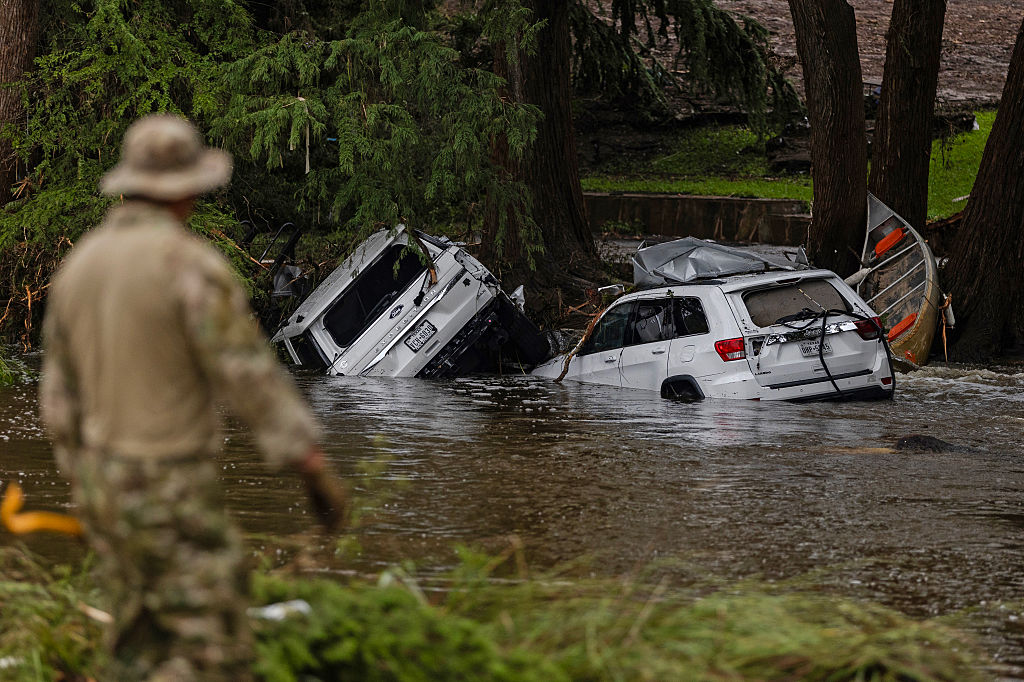
Tragedy struck Texas over the holiday weekend, as flash floods left more than 100 people dead. In the early hours of July 4, many of the towns, RV parks, and summer camps along the Guadalupe River were deluged by high waters that swept away cars, houses, and people. Among the dead were at least 27 children and staff from Camp Mystic, a popular Christian summer camp for girls in Hunt, Texas.
As thousands of state, federal, and volunteer responders comb multiple counties across Texas’ Hill Country for those who are still missing, Texans and the nation are just beginning to grapple with the question of whether this once-in-a-generation disaster was partly preventable.
The flooding was one of the worst natural disasters in modern Texas history. Early Friday morning, a severe summer storm deposited as much as 12 inches of rain on drought-parched areas of the Hill Country. The sunbaked terrain failed to absorb much of the rainfall, sending masses of water sliding across the surface of the ground. As sunrise approached, the downpour caused the Guadalupe River to rise 26 feet in 45 minutes, bursting its banks and flooding the surrounding areas.
As of Monday evening, the death count stood at 104, with dozens more people missing. Rescuers, operating from boats and helicopters, said on Monday morning that more than 850 people had been saved. Survivors told harrowing stories of floating on mattresses, clinging to trees, and watching relatives swept away in the waters.
There were also displays of heroism: Scott Ruskan, a Coast Guard swimmer who had never been on a rescue mission before, helped evacuate 165 stranded people from the flooded Camp Mystic. Silvana Garza Valdez and María Paula Zárate, two young Mexican women working as counselors at the camp, were praised by Mexican President Claudia Sheinbaum for leading their campers to safety after writing the children’s names on their arms in permanent marker in case the worst happened. And Julian Ryan, a 27-year-old resident of Ingram, Texas, died after he severed an artery punching out a window in his house to save his family from the rising waters.
Hundreds of officials from local, state, and federal agencies are in the region to administer disaster relief and continue search efforts. But as the days pass since the floods hit, it becomes less and less likely that those missing will be found alive. “This will be a rough week,” said Kerrville Mayor Joe Herring Jr. at a press conference Monday morning. “We need your prayers.”
Even though it’s one of the deadliest flooding events in Texas history, floods are not uncommon in this region of the state. Just last month, storms and flooding killed 13 people in the nearby city of San Antonio. The Hill Country is shot through with winding rivers flowing over bedrock-lined riverbeds surrounded by rocky bluffs, earning the central part of Texas the nickname “flash flood alley.” When record-breaking levels of moisture in the air, deposited by the remnants of a tropical storm from the Gulf of Mexico, reached the headwaters of the Guadalupe River near the small town of Hunt, it created a deadly combination. “Imagine the storm sits over the flood wave and moves at roughly the same speed downstream as the wave of water,” Daniel Swain, a climate scientist at the University of California, Los Angeles, said in a video livestream on Monday. “That is exactly what happened for a very extreme, very sudden, literal wall of water.”
As the search for the missing continues, politicians have raised questions about whether more could have been done to mitigate the flood’s destruction. Texas officials have criticized the National Weather Service (NWS), claiming the agency failed to accurately predict the amount of rainfall in the area over the weekend. “The original forecast that we received on Wednesday from the National Weather Service predicted three to six inches of rain in the Concho Valley and four to eight inches of rain in the Hill Country,” Texas Division of Emergency Management chief W. Nim Kidd said at a press conference on Friday. “The amount of rain that fell in this specific location was never in any of those forecasts.”
Other officials have maintained that the flood caught them by surprise. “No one knew this kind of flood was coming,” Kerr County Judge Rob Kelly, the highest-ranking elected official in the county, told reporters.
NWS struggled to predict exactly where the heaviest rains would fall—and how much rain there would be. However, it issued a flood watch on Thursday afternoon, and at 1:14 a.m. Friday morning—more than three hours before the first floods were reported—sent out urgent flash flood warnings for Kerr County, pinging cellphones in the area. NWS also upgraded the event to a flash flood emergency, a designation reserved for extremely severe incidents, at 4:03 a.m.
“[The flooding] wasn’t something that necessarily caught anybody by surprise. The forecasted rain totals were lower than what we saw. That continues to be a challenge in meteorology,” Chris Vagasky, a Wisconsin meteorologist, told TMD. “Pinpointing the exact location of the heaviest rainfall amount with the exact amount that is going to fall, that’s beyond the capabilities of science right now.”
But some people, including elected officials, have questioned whether personnel shortages caused by federal layoffs inhibited the weather service’s ability to predict the flooding. “Accurate weather forecasting helps avoid fatal disasters,” Sen. Chris Murphy said in a post to X. “There are consequences to Trump’s brainless attacks on public workers, like meteorologists.” Sen. Chuck Schumer has requested a probe into whether the staffing shortages contributed to the deaths in Texas.
The White House maintains that staffing issues were not a factor. “It’s not the administration’s fault that the flood hit when it did. But there were early and consistent warnings, and again, the National Weather Service did its job,” White House press secretary Karoline Leavitt said. Several experts concurred, despite there being vacancies at local NWS offices in Texas. “In this particular instance, I don’t think it had a significant impact, but it could have impacts down the road,” Vagasky said.
Vagasky also emphasized that NWS’s warnings—a flood watch the day before and alerts for the area where the flooding was expected to begin—worked as expected. “The forecast process worked really well,” he said. “It’s always a matter of the last mile. That’s what we talk about with getting the warnings to the people in the way that gets them to respond the way you want them to.”
Several factors could have contributed to some people not being able to reach safety despite the NWS alerts. Phones without service may not have received the flood warnings, and users can turn off the emergency alerts. At Camp Mystic, for instance, campers are not permitted to carry cell phones and other devices. Additionally, some residents of the flood-prone area may have ignored the warnings.
“Clearly, there was a major failure here between the weather service making these forecasts and issuing these warnings and the people who really needed to receive them and understand them either not receiving them or perhaps not understanding their context,” Swain said. “But there’s also an onus on local officials who have really tried to pass blame onto the weather service, which frankly, just does not appear to be accurate in this case.”
While Kerr County officials have faulted the NWS forecasts, they have come under scrutiny for not installing warning systems or sirens typical of flood-prone areas. In 2017, the county lost out on a $1 million grant to fund a project implementing a flood warning system. The project to build the system was deemed too expensive, and Judge Kelly said taxpayers weren’t willing to pay for the safety measures.
But after this weekend’s tragedy, communities across the region will likely reevaluate how they approach flood preparedness. And in the meantime, the Hill Country faces a long road to recovery. “This is not a time for partisan finger-pointing and attacks,” Republican Sen. Ted Cruz of Texas said Monday. “Now, after we come through search and rescue, after we come through the process of rebuilding, there will naturally be a period of retrospection where you look back and say, ‘OK, what exactly transpired, what was the timeline, and what could have been done differently to prevent this loss of life?”
Today’s Must-Read

Why 2026 Voters May Shrug at the Big Beautiful Bill
Toeing the Company Line



The DOJ’s New Denaturalization Push, Explained

Worth Your Time
- Nearly four years after the Taliban takeover of Afghanistan, the country’s illicit arms trade is flourishing. And it’s in large part thanks to the military hardware left behind by the U.S. military during its hasty departure, Ruchi Kumar reported in a story for UnHerd. “It’s hard to overstate how much equipment Nato left behind after its botched evacuation of Bagram Airbase. According to one report, published a few months after the Taliban returned to power, Afghanistan’s new rulers had seized over 300,000 small arms, 26,000 heavy weapons, and about 61,000 military vehicles,” she wrote. “Many of these weapons are increasingly escaping Taliban control, with swathes of their rugged country effectively outside government control. Some of these areas are ruled by Taliban allies like al-Qaeda. According to a recent report by the UN, indeed, Kabul tolerates al-Qaeda safe houses and training camps across Afghanistan. Then there are militants in nearby countries, from Kashmiri extremists to jihadis on the Iran-Pakistan border, all eager for high-tech US hardware. ‘These weapons have even been found with various groups in countries far beyond Afghanistan and the region,’ one former Afghan security official tells UnHerd, ‘which is likely to become a serious problem in the near future.’”
- Writing for Christianity Today, Jill Nelson chronicled one documentary film crew’s efforts to tell the story of Ukrainian Christians under siege. “The filmmakers interviewed Mykhailo Brytsyn, pastor of Grace Church in Melitopol, and showed footage of Russian soldiers taking over a Grace Church service in September 2022. They also have Baptist pastor Okleh Perkachenko detail his narrow escape after drones targeted a prayer meeting in his yard and returned to the same place two days later, destroying his parked car. A drone struck his van while he was driving his kids, then targeted his house when he returned home,” Nelson wrote. “Moscow’s attacks on non–Russian Orthodox churches began during its first invasion in 2014. … [Film producer Colby] Barrett said his conversations with Christians in Ukraine deeply impacted his faith. The film team interviewed more than 40 people in seven cities. The Ukrainians reminded him of the persecuted church in the New Testament. ‘You’ve got this scrappy group of believers that are being basically hunted by an empire that does not like them at all,’ he said.”
Presented Without Comment
The Hill: Judge Demands DOJ Explain Abrego Garcia Plans: ‘It’s Like Trying To Nail Jell-O to a Wall’
A federal judge on Monday scrutinized the Trump administration’s plan for Kilmar Abrego Garcia if he’s released from criminal custody as soon as next week, ordering the government to produce a witness to answer more questions.
“It’s like trying to nail Jell-O to a wall trying to figure out what’s going to happen next week,” U.S. District Judge Paula Xinis said.
Also Presented Without Comment
NBC News: DOJ Memo Dismissing Epstein Conspiracy Theories Sparks Conservative Anger
Conservative internet and media personalities are criticizing Attorney General Pam Bondi and the Trump administration after a recent government memo appeared to contradict statements Bondi made about the case of convicted sex offender and financier Jeffrey Epstein.
The two-page memo, published by the FBI and Justice Department after an “exhaustive review” of materials related to Epstein, concluded that there is no evidence of an “incriminating ‘client list’,” or evidence that would lead to additional prosecution of third parties. The memo also concluded that Epstein died by suicide in his Manhattan jail cell in 2019 and that no evidence was found to suggest that he had participated in blackmail.
In the Zeitgeist
Traditional concert venues appear to be too boring for The All-American Rejects. The 2000s rock band has recently taken to performing pop-up concerts at small, random venues, including house parties and even a bowling alley. This weekend, the band held an impromptu show at the Savannah Bananas baseball game at Boston’s Fenway Park.
Here’s the moment the band surprised attendees, with frontman Tyson Ritter, uniform-clad and microphone in hand, shimmying his way from the bleachers down to the field.
Let Us Know
Do you know anyone who has been affected by the flooding in Texas?






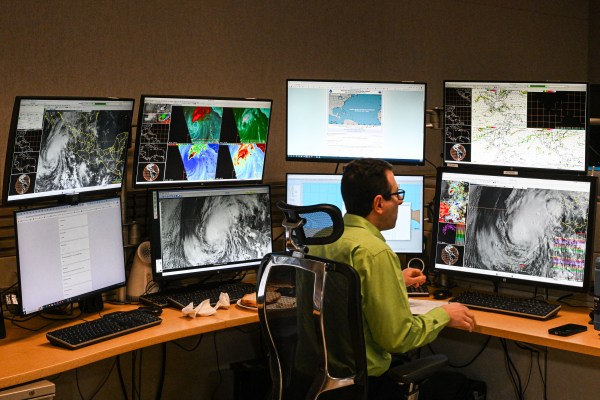
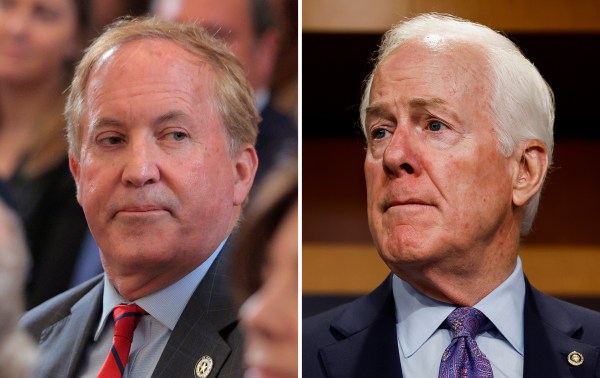
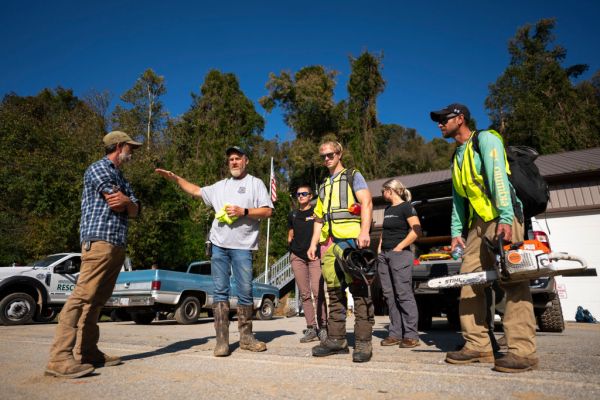
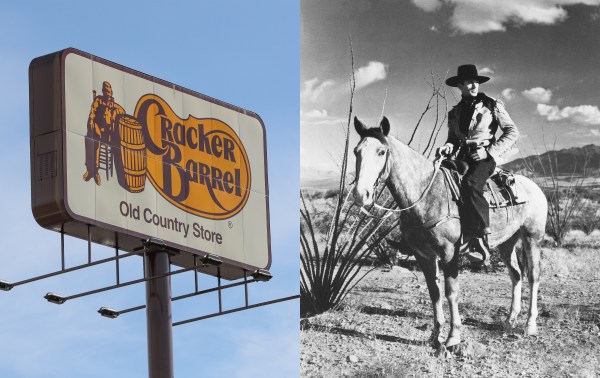




Please note that we at The Dispatch hold ourselves, our work, and our commenters to a higher standard than other places on the internet. We welcome comments that foster genuine debate or discussion—including comments critical of us or our work—but responses that include ad hominem attacks on fellow Dispatch members or are intended to stoke fear and anger may be moderated.
With your membership, you only have the ability to comment on The Morning Dispatch articles. Consider upgrading to join the conversation everywhere.